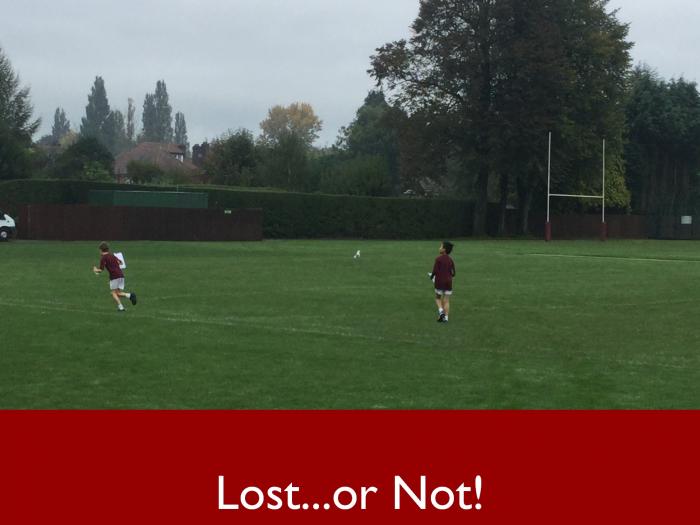
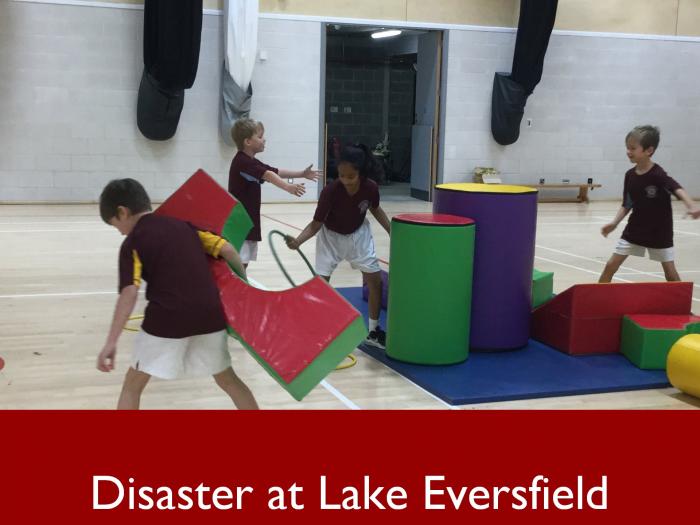
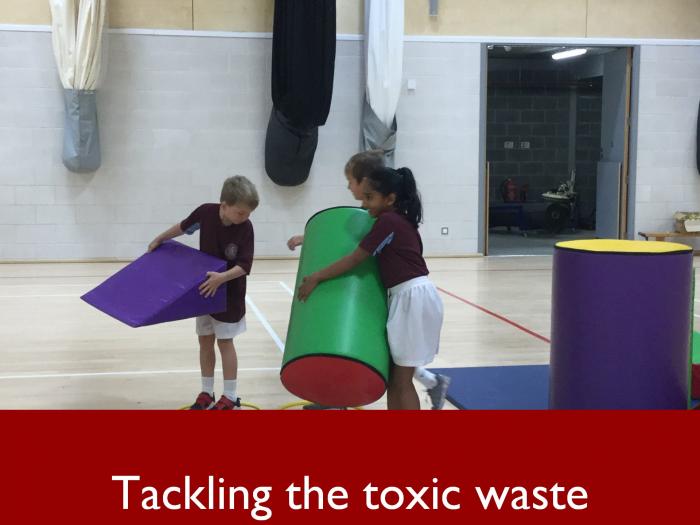
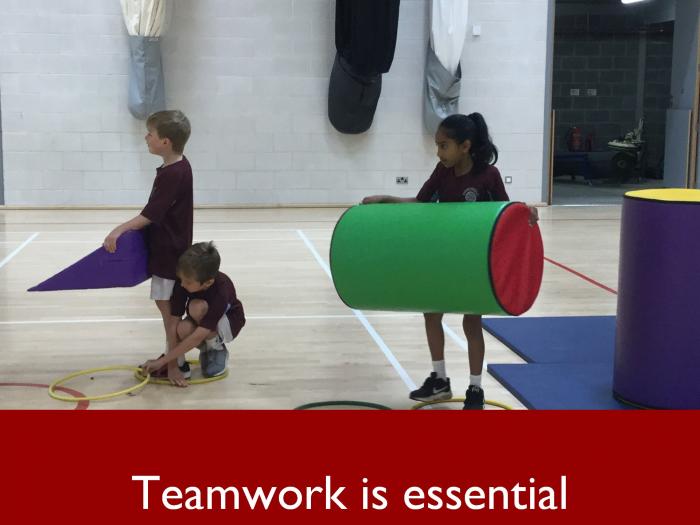
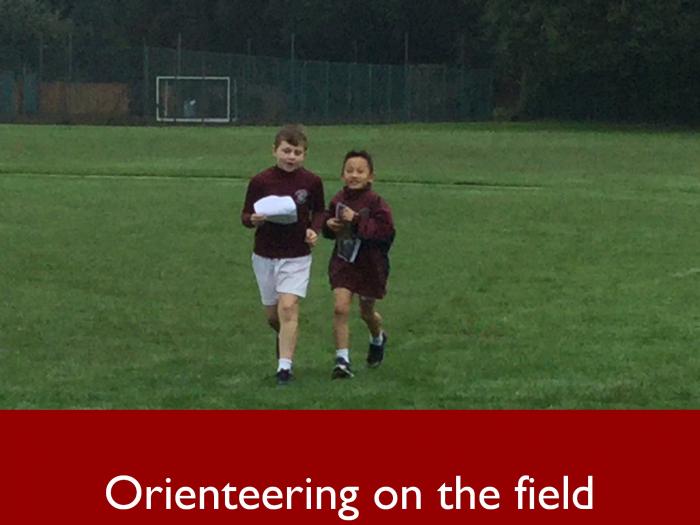
Lost…or Not!
Being a rather old school type of person, I believe we are too reliant these days on computer technology to tell us where we are and where we should be going. As far as I’m concerned, nothing beats the beauty and fascination of a traditional map, and using one to navigate by is an essential life skill. At Eversfield, we are happy to use paper-based maps and atlases, although I should add that we make good use of digital ones, too. Mr Sliney is of the same opinion, and he has introduced an orienteering element into this half term’s work in PE for Form 4 on adventurous and outdoor games. Already this term, he has single-handedly transformed the JSB into an imaginary swamp, a crystal clear lake and a bleak range of hills where flocks of sheep are grazing, not always so safely as it happened.
When you teach PE, you see a different side to the children from that which they display in the classroom, and it is often very inspiring. In this unit, particularly, Mr Sliney has put a lot of emphasis on team work. The challenges set have been constructed to allow confident children to develop their leadership skills by discovering how listening to others and embracing the spirit of compromise can yield the best results. Others, learning by example as well as from the wise words of their teacher, begin to become more confident at their own pace.
It’s all a far cry from the backbiting seen every week on The Apprentice. Present children with a problem and they genuinely want to help you solve it. I wish I could have seen the sheep challenge Mr Sliney set for 4ML a few weeks ago whereby a democratically elected shepherd was given the job of rounding up half a dozen or so human sheep and delivering them to the sheep pen, avoiding numerous hazards on the way. The task was complicated by the fact that the sheep had been blindfolded and could not understand English. Monty was full of praise for his shepherd, Yahya. “He was an excellent teacher,” he told me. “He taught us a new language, and we all understood what to do.” By contrast, Jessie’s shepherd didn’t appear to have his flock under control, resulting in several mishaps and a long delay.
Mr Sliney has been gradually upping the spatial element of the challenges until, in their most recent lesson, he decided that 4ML were ready to have a go at orienteering. His starting point was an aerial view of the school grounds, which he invited the children to study carefully so that they could orientate themselves. These aerial shots are a wonderful resource to use in Geography lessons although if, like us, you have recently had building work done, you may have to wait a while for the satellite to fly over again and update the image. The JSB now appears on Google Maps, but we don’t yet have the two new classrooms adjacent to the Music Room.
The children then had to organise themselves into pairs. One child was given a plastic cup, a piece of blu tack and a copy of the map. They were dispatched outside to hide the cup somewhere in the school grounds and to use the blu tack to mark the point on the map where the cup was hidden. Returning to the JSB, they handed the map to their partner, whose task it was to find the cup.
What fun this proved to be! The challenge to find an extremely obscure place to secrete the cups was quite irresistible, and poor Diyan never found the cup that Lucas hid in the bushes, whilst Rajan reported that Weng Wo placed the blu tack on the map on the wrong side of a clump of trees, making his search considerably more challenging. According to Trisha, cup number seven was never found at all and is presumably still languishing out there somewhere on the games field. Weng Wo felt that the scale of the map presented a problem, meaning that he had a very large area to search. William placed his cup near the rugby posts, only to discover that the rugby posts did not appear on the map. This mystery can, of course, be explained by the fact that the aerial photograph was taken outside the rugby season at Eversfield, an unexpected drawback of using digital imagery.
Mr Sliney was well aware that the most crucial element in all of this was the piece of blu tack. Lose it and you have no chance of finding the cup. You have to hang on to it, even when you are running which, as Raya discovered, is by no means easy. And this was no ordinary blu tack…well-connected Mr Sliney informed the children that he had received it as a gift from the scientists at NASA and each tiny blob was valued at $1 million! By the end of the lesson, a few children had accrued debts of astronomical proportions; but don’t worry, parents – I am reliably informed that these charges will not appear on your termly accounts!
Meanwhile, those children not searching for cups or pieces of blu tack on the field weren’t given any time to kick their heels. They were in the JSB, engaged in a game called Toxic Waste, as part of which a virtual island in the middle of the equally virtual Lake Eversfield has become sadly polluted by toxic waste. The children had to get the waste off the island without allowing any to fall into the lake. The waste took the form of bulky soft play equipment, and moving it required close co-operation of all team members, since the only safe route across the water involved stepping into hoops, and these had to be manoeuvred along as well as the waste. Lucas said he accidentally dropped the largest possible piece of waste into the lake, as a result of which he had to start all over again at the island.
For their final lesson in this unit, the children will again be sent out into the school grounds, this time in pairs, with the brief to collect a range of specified items, including leaves, twigs, stones and feathers, which they will then form into a piece of Andy Goldsworthy style instant art. Mr Sliney hopes that these experiences will encourage the children to become involved in orienteering and related activities as they get older. Judging by the enthusiasm they demonstrated when I talked to them about their lessons, I think he could well be right.